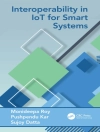This invaluable resource tells the complete story of failure mechanisms–from basic concepts to the tools necessary to conduct reliability tests and analyze the results. Both a text and a reference work for this important area of semiconductor technology, it assumes no reliability education or experience. It also offers the first reference book with all relevant physics, equations, and step-by-step procedures for CMOS technology reliability in one place. Practical appendices provide basic experimental procedures that include experiment design, performing stressing in the laboratory, data analysis, reliability projections, and interpreting projections.
Table of Content
Preface.
1 INTRODUCTION (Alvin W. Strong).
1.1 Book Philosophy.
1.2 Lifetime and Acceleration Concepts.
1.3 Mechanism Types.
1.4 Reliability Statistics.
1.5 Chi-Square and Student t Distributions.
1.6 Application.
2 DIELECTRIC CHARACTERIZATION AND RELIABILITY
METHODOLOGY (Ernest Y. Wu, Rolf-Peter Vollertsen, and Jordi
Sune).
2.1 Introduction.
2.2 Fundamentals of Insulator Physics and Characterization.
2.3 Measurement of Dielectric Reliability.
2.4 Fundamentals of Dielectric Breakdown Statistics.
2.5 Summary and Future Trends.
3 DIELECTRIC BREAKDOWN OF GATE OXIDES: PHYSICS AND
EXPERIMENTS (Ernest Y. Wu, Rolf-Peter Vollertsen, and Jordi
Sune).
3.1 Introduction.
3.2 Physics of Degradation and Breakdown.
3.3 Physical Models for Oxide Degradation and Breakdown.
3.4 Experimental Results of Oxide Breakdown.
3.5 Post-Breakdown Phenomena.
4 NEGATIVE BIAS TEMPERATURE INSTABILITIES IN p MOSFET
DEVICES (Giuseppe La Rosa).
4.1 Introduction.
4.2 Considerations on NBTI Stress Configurations.
4.3 Appropriate NBTI Stress Bias Dependence.
4.4 Nature of the NBTI Damage.
4.5 Impact of the NBTI Damage to Key p MOSFET Transistor
Parameters.
4.6 Physical Mechanisms Contributing to the NBTI Damage.
4.7 Key Experimental Observations on the NBTI Damage.
4.8 Nit Generation by Reaction-Diffusion (R-D)
Processes.
4.9 Hole Trapping Modeling.
4.10 NBTI Dependence on CMOS Processes.
4.11 NBTI Dependence on Area Scaling.
4.12 Overview of Key NBTI Features.
5 HOT CARRIERS (Stewart E. Rauch, III).
5.1 Introduction.
5.2 Hot Carriers: Physical Generation and Injection
Mechanisms.
5.3 Hot Carrier Damage Mechanisms.
5.4 HC Impact to MOSFET Characteristics.
5.5 Hot Carrier Shift Models.
6 STRESS-INDUCED VOIDING (Timothy D.
Sullivan).
6.1 Introduction.
6.2 Theory and Model.
6.3 Role of the Overlying Dielectric.
6.4 Summary of Voiding in Al Metallizations
6.5 Stress Voiding in Cu Interconnects.
6.6 Concluding Remarks.
7 ELECTROMIGRATION (Timothy D.
Sullivan).
7.1 Introduction.
7.2 Metallization Failure.
7.3 Electromigration.
7.4 General Approach to Electromigration Reliability.
7.5 Thermal Considerations for Electromigration.
7.6 Closing Remarks.
Index.
About the author
ALVIN W. STRONG, Ph D, is retired from IBM in Essex Junction,
Vermont. He holds nineteen patents, has authored or coauthored a
number of papers, and is a member of the IEEE and chair of the
JEDEC 14.2 standards subcommittee.
ERNEST Y. WU, Ph D, is a Senior Technical Staff Member at
Semiconductor Research and Development Center (SRDC) in the IBM
System and Technology Group. He has authored or coauthored more
than 100 technical or conference papers. His research interests
include dielectric/device reliability and electronic physics.
ROLF-PETER VOLLERTSEN, Ph D, is a Principal for
Reliability Methodology at Infineon Technologies AG in Munich,
Germany, where he is responsible for methods and test structures
for fast Wafer Level Reliability monitoring and the implementation
of fast WLR methods.
JORDI SUNE, Ph D, is Professor of Electronics Engineering
at the Universitat Aut¿noma de Barcelona, Spain. He is Senior
Member of the IEEE and has coauthored over 150 publications on
oxide reliability and electron devices. His research interests are
in gate oxide physics, reliability statistics, and modeling of
nanometer-scale electron devices.
GIUSEPPE La ROSA, Ph D, is Project Leader of the FEOL
technology reliability qualification activities for the development
of advanced SOI Logic and e DRAM technologies at IBM, where he is
responsible for the implementation and development of
state-of-the-art NBTI stress and test methodologies.
TIMOTHY D. SULLIVAN, Ph D, is Team Leader for
metallization reliability at IBM’s Essex Junction facility. The
author of numerous technical papers and tutorials, he holds
thirteen patents with several more pending.
STEWART E. RAUCH, III, Ph D, is currently a Senior
Technical Staff Member at the IBM SRDC in New York, where he
specializes in hot carrier and NBTI reliability of state-of-the-art
CMOS devices. He is the author of numerous technical papers and
tutorials and holds five patents.












